Disclosure: This article contains affiliate links. We may earn a commission from purchases at no extra cost to you, which helps our travel content.
Standing at the intersection of Main and Middle Streets, I felt the familiar tingle of architectural discovery—that moment when a city's built environment begins to reveal its soul. Georgetown, with its distinctive wooden colonial architecture set against the tropical Guyanese landscape, offers a fascinating study in cultural resilience and adaptation. As someone who has spent her life between Valencia's futuristic City of Arts and Sciences and America's gridded urban planning, Georgetown presents a refreshing architectural narrative that few Western travelers ever experience.
The Wooden Wonders of Georgetown
Georgetown's most distinctive feature is undoubtedly its colonial wooden architecture—an adaptation of European design principles to tropical conditions that created something entirely unique in the architectural world. St. George's Cathedral, standing proudly as one of the tallest wooden buildings in the world at 143 feet, exemplifies this tradition. Constructed entirely of greenheart wood, its Gothic Revival style with tropical adaptations left me breathless.
Wandering through the streets with my compact binoculars to study the intricate fretwork and jalousie windows became a daily ritual during my week here. The binoculars proved invaluable for appreciating details on upper stories that would otherwise go unnoticed—the delicate wooden lacework that adorns many buildings deserves close inspection.
What fascinates me as a developer is how these structures have survived Guyana's punishing climate for centuries. The elevated designs allowing air circulation beneath the buildings, wide verandas creating shade, and louvered windows maximizing cross-ventilation all represent climate-responsive design principles we're only now rediscovering in modern sustainable architecture.
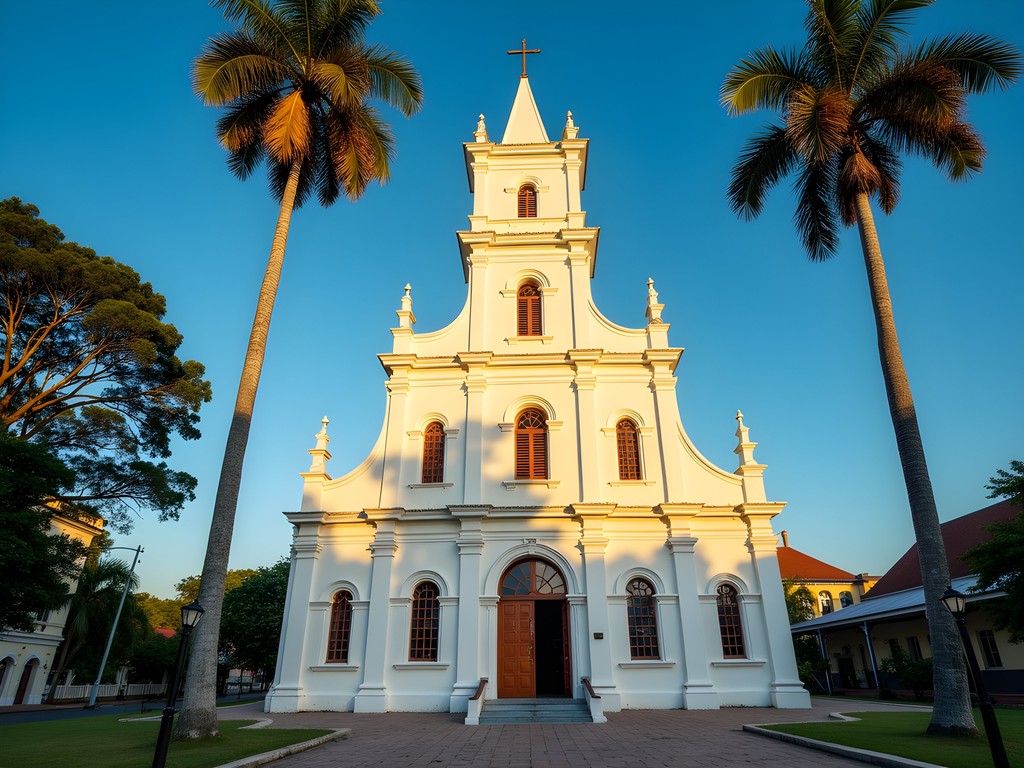
💡 Pro Tips
- Visit St. George's Cathedral early morning when the light illuminates the interior through the stained glass windows
- Look for the distinctive demerara shutters—hinged at the top rather than sides—a uniquely Guyanese adaptation
- Carry a small sketchbook to capture architectural details—photography sometimes misses the subtleties of the wooden craftsmanship
Stabroek Market: Commercial Heritage
No architectural exploration of Georgetown would be complete without spending time at Stabroek Market, a cast-iron marvel that has served as the commercial heart of the city since 1881. The distinctive iron and steel structure with its prominent four-faced clock tower represents a fascinating intersection of Victorian industrial design and colonial commerce.
Walking through the market's labyrinthine interior, I was struck by how the design facilitates natural ventilation—a testament to pre-air conditioning ingenuity. The iron skeleton, shipped piece by piece from England, was an architectural response to the frequent fires that plagued the previous wooden markets. Yet despite its European origins, the space functions in a distinctly Caribbean manner, with vendors and shoppers creating a vibrant social ecosystem within the industrial framework.
I spent hours documenting the market's architectural details with my mirrorless camera, which handled the challenging lighting conditions beautifully. The contrast between light streaming through the high windows and the shadowed interior creates dramatic compositions that capture the market's atmospheric quality.
"El mercado no es solo un lugar para comprar, es el pulso de la ciudad," as my mother would say—a market is not just a place to shop, but the pulse of a city. Nowhere is this more evident than at Stabroek.

💡 Pro Tips
- Visit both early morning and late afternoon to experience different lighting conditions inside the market
- Look up to appreciate the cast-iron framework and Victorian engineering
- Bring small local currency for purchasing snacks from vendors—it's a great way to engage with the space as locals do
City Hall: Victorian Gothic in the Tropics
Georgetown's City Hall represents one of the most successful translations of European Gothic Revival architecture into a tropical vernacular. Standing before its white wooden facade, ornate turrets, and soaring spire, I couldn't help but think of how this building embodies the colonial paradox—European aesthetic ideals realized through indigenous materials and craftsmanship.
Built between 1887-1889, the structure demonstrates remarkable spatial efficiency. During my visit, I was fortunate to gain access to some of the interior spaces through a local architect contact. The hammer-beam roof trusses in the main hall are particularly impressive—a Gothic technique executed entirely in local hardwoods.
The building's current state of disrepair is heartbreaking to witness as a developer focused on historic preservation. Many wooden elements are deteriorating, and restoration efforts have been sporadic. I found myself sketching structural details in my waterproof notebook, which proved essential during a sudden tropical downpour while documenting the exterior.
The preservation challenges facing Georgetown's wooden architectural heritage highlight the urgent need for sustainable conservation approaches that respect both the historical significance and the practical limitations of maintaining wooden structures in a tropical climate.
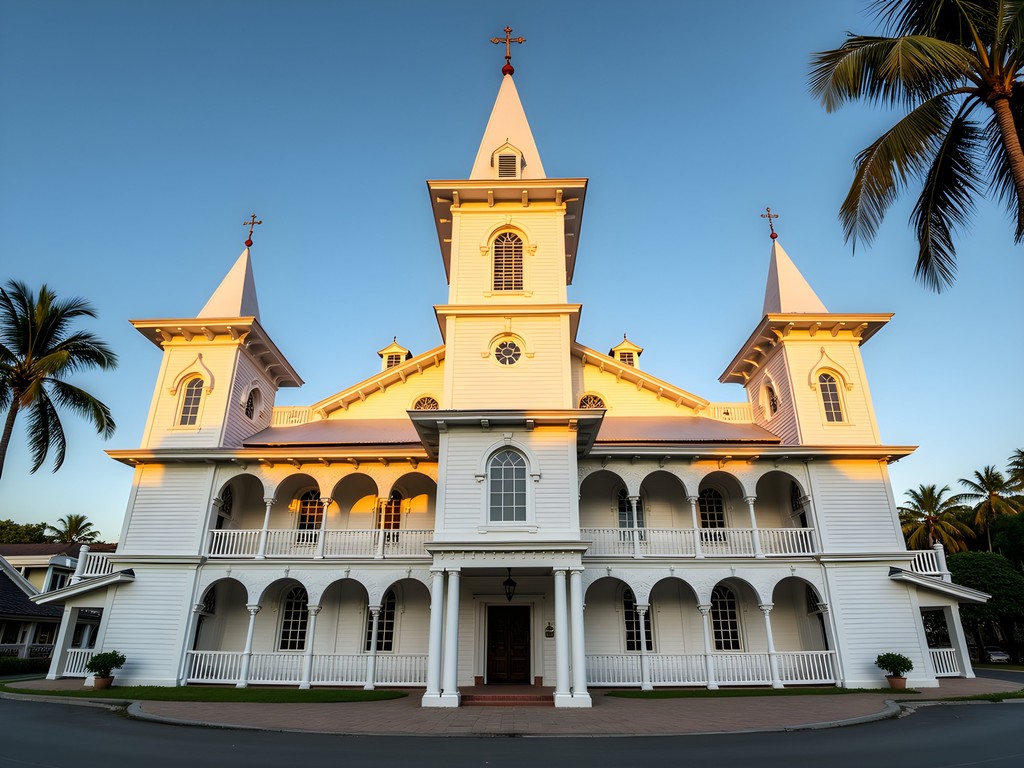
💡 Pro Tips
- Photograph City Hall in early morning or late afternoon when the white wood glows in the golden light
- Look for the original cast-iron railings and decorative elements that contrast with the wooden structure
- If possible, arrange a guided tour through the Guyana Heritage Society for interior access
The Residential Legacy: Promenade Gardens and Queenstown
Georgetown's residential architecture tells perhaps the most compelling story of colonial adaptation. The Promenade Gardens area and Queenstown neighborhood showcase how European domestic architecture evolved to suit the tropical environment. The classic Guyanese house—raised on pillars, surrounded by verandas, adorned with fretwork—represents centuries of architectural evolution.
Walking these neighborhoods with my sun hat (essential protection against the intense equatorial sun), I documented dozens of variations on the basic raised wooden house. The practical benefits are immediately apparent: elevation protects against flooding and allows cooling breezes to circulate beneath the structure; deep verandas shade the interior while providing outdoor living space; steep roofs shed heavy rainfall quickly.
What struck me most was the sophisticated passive cooling strategies employed long before air conditioning existed. Many homes feature a central corridor running from front to back, creating a wind tunnel effect that draws air through the entire structure. Louvered windows and doors can be adjusted throughout the day to direct airflow, while fretwork transoms above doors allow hot air to escape even when doors are closed for privacy.
As a developer focused on culturally-sensitive design, I find these historical solutions profoundly relevant to contemporary sustainable architecture. The vernacular wisdom embedded in Georgetown's residential buildings offers valuable lessons in climate adaptation that modern architects would be wise to study.
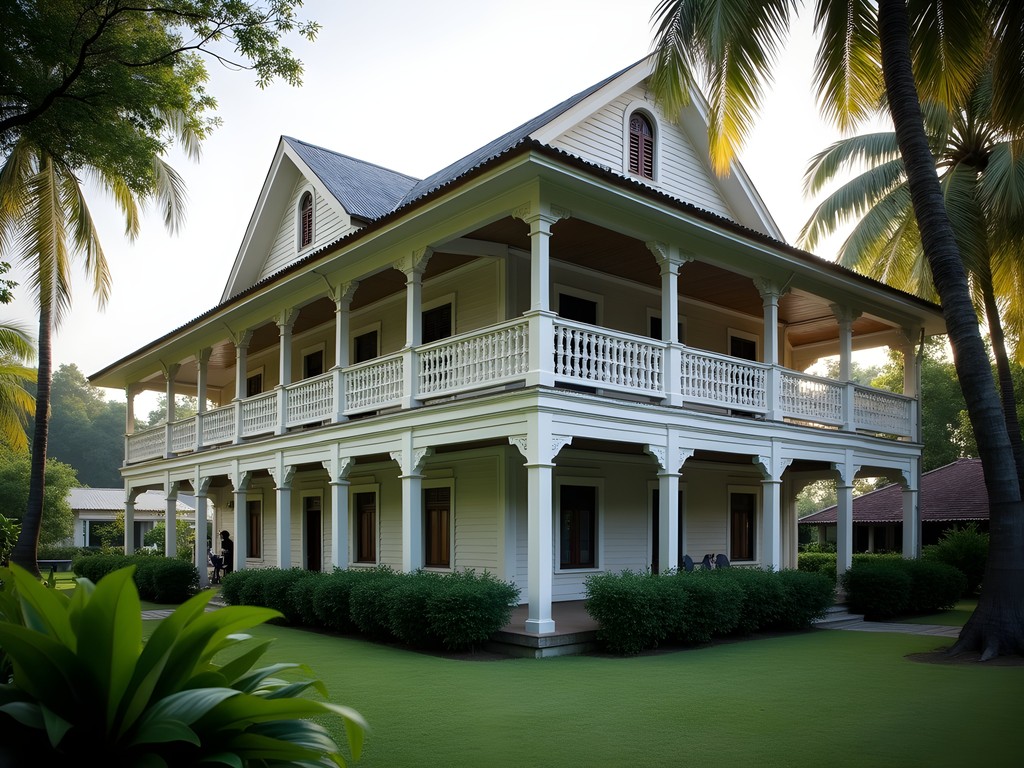
💡 Pro Tips
- Walk the residential areas early morning when many homeowners are on their verandas and willing to chat about their historic homes
- Notice how homes are oriented to maximize cross-ventilation from the prevailing northeast trade winds
- Look for the traditional distinction between service areas (kitchens, servants' quarters) and family spaces in the layout of larger homes
Preservation Challenges and Future Prospects
The architectural treasures of Georgetown face significant preservation challenges. Climate change brings more intense rainfall and flooding to an already vulnerable coastal city, while economic constraints limit maintenance resources. Yet during my visit, I witnessed encouraging signs of renewed interest in conservation.
The National Trust of Guyana has begun documenting the city's architectural heritage using digital technologies. I spent an afternoon with their team, sharing experiences from my own development work in adaptive reuse projects. Their dedication despite limited resources was inspiring.
For those interested in architectural documentation, I found my laser distance measure invaluable for quickly recording building dimensions. Combined with my digital level, I could efficiently document structural conditions of the historic buildings I visited.
What Georgetown needs most is a sustainable conservation model that balances preservation with economic viability. Tourism can play a crucial role here—architectural tourism specifically could provide financial incentives for restoration while raising awareness of Georgetown's unique built heritage. The city's 2005 application for UNESCO World Heritage status remains pending, but such designation would significantly boost both protection efforts and visitor numbers.
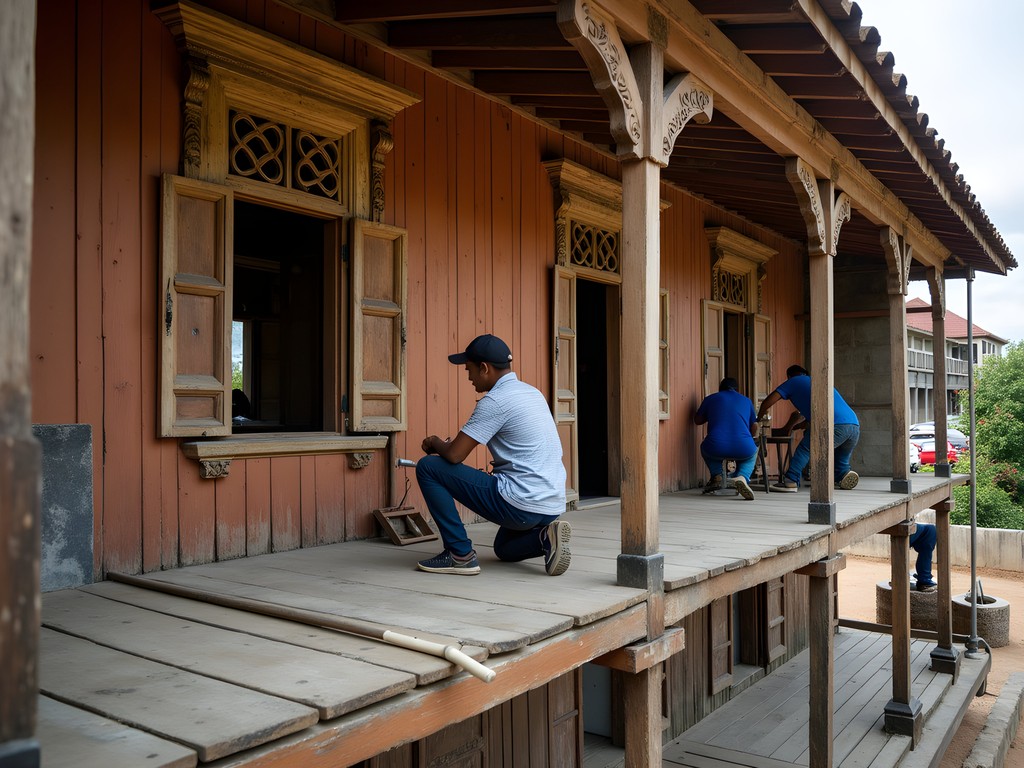
💡 Pro Tips
- Support local preservation efforts by visiting the National Trust of Guyana's visitor center
- Purchase locally-produced architectural guides and books whose proceeds support conservation
- Consider donating to specific restoration projects through established heritage organizations
Final Thoughts
Georgetown's colonial architectural heritage offers far more than aesthetic pleasure—it represents a living laboratory of climate adaptation, cultural fusion, and sustainable building practices. As I reluctantly departed after my week of exploration, I couldn't help but reflect on how these wooden masterpieces contain solutions to challenges we face in contemporary architecture: how to build sustainably in challenging climates, how to create culturally meaningful spaces, and how to adapt rather than impose architectural ideas.
For visitors willing to look beyond the Caribbean's typical beach destinations, Georgetown rewards with an architectural experience unlike any other in the Western Hemisphere. Its wooden cathedrals, cast-iron markets, and elevated colonial homes tell a complex story of empire and adaptation, of European forms reimagined through tropical necessities.
"La arquitectura es el testigo insobornable de la historia," as the saying goes—architecture is the incorruptible witness of history. In Georgetown, that witness speaks eloquently of a colonial past while offering valuable lessons for our architectural future. I urge fellow travelers with an appreciation for built heritage to experience this remarkable city before mass tourism discovers its unique charm.
✨ Key Takeaways
- Georgetown's wooden colonial architecture represents a unique adaptation of European styles to tropical conditions
- The city contains some of the best-preserved examples of 19th-century wooden architecture in the world, including St. George's Cathedral
- Traditional Guyanese building techniques demonstrate sophisticated passive cooling strategies relevant to contemporary sustainable design
- Preservation efforts are ongoing but require greater international support and recognition
- The city offers exceptional opportunities for architectural photography and documentation
📋 Practical Information
Best Time to Visit
January to March (dry season)
Budget Estimate
$75-150 USD per day including mid-range accommodations, meals, and local transportation
Recommended Duration
5-7 days to fully appreciate the architectural heritage
Difficulty Level
Moderate (Requires Comfortable Walking In Tropical Heat And Navigating Areas With Limited Tourism Infrastructure)
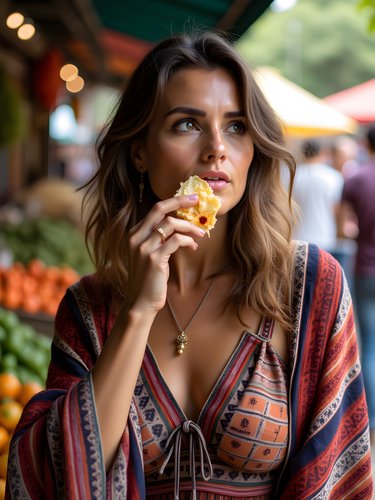

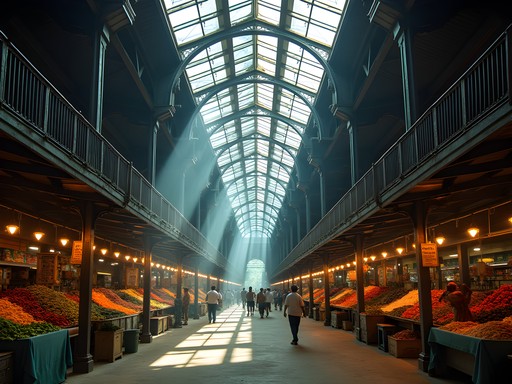
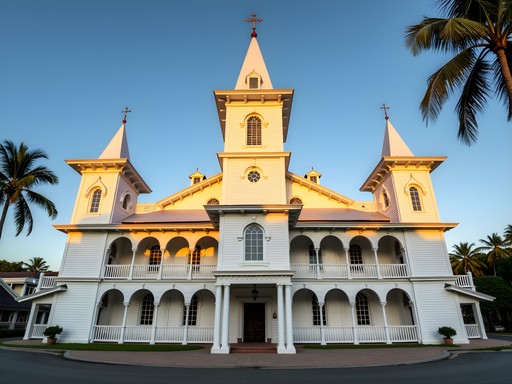












Comments
TropicalExplorer
Is it safe to wander around taking photos of these buildings? Any areas to avoid?
Morgan Greene
Generally safe during daylight hours, especially in the main historic areas. I'd avoid wandering alone after dark, particularly around Stabroek Market. The locals are usually happy to see tourists appreciating their architectural heritage!
roamfan1333
Just booked my trip for January! Can't wait to see these buildings in person. Thanks for the inspiration!
HistoryBuff42
Love that you highlighted the climate adaptation aspects of the architecture. So interesting!
sunsetwanderer
The Promenade Gardens were my favorite spot in the whole city. So peaceful!
Lillian Diaz
Just got back from Georgetown last month and your post perfectly captures what makes the architecture there so special! I spent three days just wandering around with my jaw dropped. City Hall was under some renovation when I visited, but Stabroek Market was the highlight for me - that clock tower against the blue sky is unforgettable. One tip for anyone going: the local minibuses are a great way to get around and see different neighborhoods. I stayed in Queenstown and loved walking those streets in the evening when the light hits the wooden houses just right. The locals were incredibly friendly and often shared stories about their historic homes. Georgetown definitely deserves more attention on the travel circuit!
CaribbeanDreamer
How was getting to Guyana in general? I've been thinking about going but the flights seem limited.
Lillian Diaz
It's definitely not the easiest place to reach! I flew through Trinidad which worked well. Caribbean Airlines has regular connections. Just make sure you have a good travel insurance since it's a bit off the beaten path. Totally worth the effort though!
CaribbeanDreamer
Thanks for the info! Going to look into those flight routes.
moonzone
Those wooden buildings look amazing! Never would have thought Guyana would be on my bucket list but now it is!
islandperson
Great post! What's the best time of year to visit Georgetown weather-wise? I'm not great with extreme heat or constant rain. Also wondering if most of these buildings are within walking distance or if you need to arrange transportation?
sunsetwanderer
February-April is driest and not too hot. Most sites are walkable in the central area, but it gets HOT midday. Early morning exploring is the way to go!
dreamphotographer
Those wooden buildings look incredible! Any tips on the best time of day to photograph them? I'm heading to Georgetown in October and really want to capture that colonial charm.
Morgan Greene
Early morning light (around 6:30-8am) gives the wooden buildings this amazing golden glow, especially along Main Street! The afternoon rain showers create nice reflections too if you catch them after they clear.
dreamphotographer
Perfect, thanks! Will definitely plan for some early mornings then.
waveace7537
What's the best time of year to visit if I want to avoid the worst of the heat but still get good weather for photography?
roamfan1333
I went in February and it was perfect! Still warm but not crazy humid.
Casey Andersson
Morgan, your post transported me back to my visit last year! I stayed at Cara Lodge, which itself is a stunning example of colonial architecture (dating back to the 1840s). One thing I'd add about Georgetown's wooden buildings is how the afternoon light makes them glow - photographers should definitely plan for golden hour shoots. The contrast between the weathered wood and the tropical greenery makes for stunning photos. I found the best views of Stabroek Market were actually from the nearby jetty at sunset. If anyone's planning a visit, I'd recommend bringing a good travel umbrella as those tropical downpours come out of nowhere, even in the 'dry' season!
Venture X
Premium card with 2X miles, $300 travel credit, Priority Pass